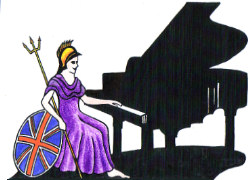Teachers, Accompanists and Piano Entertainers in the UK

UK Piano Page

The Estate Yard
Eridge
Royal Tunbridge Wells, Kent TN3 9JR
England
The Piano Shop Kent is near Tunbridge Wells on the
The Hurst Crouch
Borough Green
Sevenoaks, Kent TN15 8TA
England
We offer some of the lowest prices in Europe for
Rookery Farm
Radstock, Somerset BA3 4UL
England
Abbey Piano Services is run by a small team of
Bedford House Bedford Street
Belfast, County Antrim BT1 6GE
Northern Ireland
Exclusive Yamaha and Roland dealer for Belfast. We
15 Leckey Road
Ballinderry Upper
Lisburn, County Antrim BT28 2QA
Northern Ireland
A.A Music are a leading supplier of new/used
Music Festival for performers and guests Our 10th
18-06-2022 12:30PM
The Morecambe Bay Piano Group was set up to extend
11-12-2021 01:00PM
The Morecambe Bay Piano Group was set up to extend
08-01-2022 01:00PM
The Morecambe Bay Piano Group was set up to extend
12-02-2022 01:00PM
Jazz Musivc in the UK Jazz in the UK is a form of music derived from jazz in the deep south of the USA. It arrived in the UK on records and Jazz performers who visited the country while it was a relatively new genre, soon after the end of World War I. Jazz began to be played by British musicians from the 1930s many in the south of England and became popular in the rest of the UK by 1940s, often within dance bands.
Ronnie Scott's Jazz Club opened in London, in 1959. Zoot Sims Jazz saxophonist was the club's first American visitor in 1962 Many famous Jaz artists have played there, including: Earl "Fatha" Hines, Chet Baker, Ella Fitzgerald, Anita O'Day, Nina Simone, Curtis Mayfield, Blossom Dearie, Dianne Reeves, Stacey Kent, Katie Melua, Jamie Cullum, Bobby Broom, Wynton Marsalis, Madeleine Peyroux, Prince, Chick Corea, Pat Metheny, George Benson and Cassandra Wilson. Also, in 1970 Jimi Hendrix's last public performance was at Ronnie Scott's.